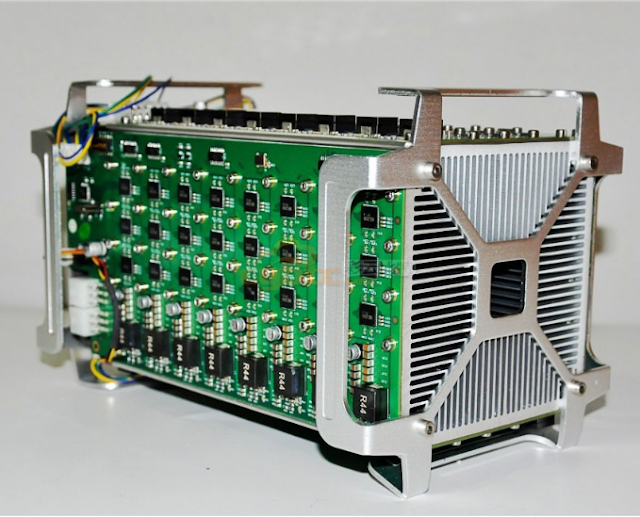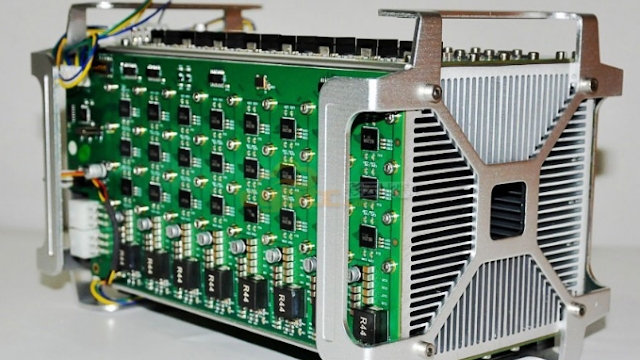As the world of cryptocurrency continues to evolve and gain traction, one phenomenon that has garnered significant attention is the rise of ASIC miners. These powerful devices have revolutionized the process of mining cryptocurrencies by unleashing unprecedented levels of computing power. With their specialized hardware and efficient design, ASIC miners have quickly become the preferred choice for miners looking to extract the maximum potential from their mining operations.
What sets ASIC miners apart from traditional mining equipment is their ability to perform a specific set of tasks with remarkable speed and efficiency. ASIC, which stands for Application-Specific Integrated Circuit, refers to the chips embedded within these miners that are specifically designed to perform mining calculations. Unlike general-purpose computer processors, ASIC miners are purpose-built for mining cryptocurrencies, enabling them to achieve unparalleled performance levels.
The advent of ASIC miners has revolutionized the landscape of cryptocurrency mining by significantly increasing the hash rates and energy efficiency of mining operations. These devices offer performance gains that are orders of magnitude higher than traditional CPUs or GPUs, resulting in faster and more lucrative mining capabilities. As a result, miners utilizing ASIC technology have the potential to mine cryptocurrencies at a much faster rate and generate greater profits compared to their counterparts using conventional mining equipment.
With their incredible processing power, ASIC miners have brought about a new era of efficiency and profitability for cryptocurrency miners. However, their dominance in the mining industry has not been without controversy. The rapid development and adoption of ASIC miners have raised concerns about centralization, as smaller miners using traditional equipment may struggle to compete with the superior capabilities of ASIC-based operations. Nevertheless, the rise of ASIC miners has undeniably transformed the cryptocurrency mining landscape, presenting miners with a formidable tool that unlocks the untapped potential of this lucrative industry.
The Evolution of Cryptocurrency Mining
Cryptocurrency mining has come a long way since its inception. In the early days, when Bitcoin first emerged, mining was done on regular personal computers. However, as the popularity of cryptocurrencies increased, mining became more competitive and specialized hardware known as ASIC miners entered the scene.
ASIC miners, short for Application-Specific Integrated Circuit miners, are devices specifically designed to mine cryptocurrencies. Unlike CPUs and GPUs, which are general-purpose processors, ASIC miners are tailored to perform the complex calculations required for mining with remarkable efficiency.
Get Started
The introduction of ASIC miners revolutionized the cryptocurrency mining industry. These powerful machines enabled miners to significantly increase their mining capabilities, outperforming traditional mining hardware by a wide margin. With specialized algorithms and high processing power, ASIC miners unlocked the true potential of cryptocurrency mining.
As more and more ASIC miners flooded the market, the competition among miners intensified. Mining became a game of acquiring the most advanced and efficient ASIC miners to stay at the cutting edge. Manufacturers continuously pushed the boundaries, developing more powerful and energy-efficient ASIC miners to cater to the growing demand.
Today, ASIC miners have become synonymous with cryptocurrency mining. They have become the backbone of many popular cryptocurrencies, driving the mining process forward at an unprecedented pace. With their immense processing power and specialized design, ASIC miners have unleashed the true power of cryptocurrency mining, paving the way for new possibilities and opportunities in the digital realm.
Understanding ASIC Miners

ASIC miners, short for Application-Specific Integrated Circuit miners, are specialized hardware devices designed solely for the purpose of cryptocurrency mining. These powerful machines have gained significant popularity in recent years due to their ability to deliver exceptional mining performance and efficiency.
Unlike traditional mining methods that rely on general-purpose computer hardware like CPUs or GPUs, ASIC miners are specifically engineered to perform the complex mathematical calculations required for cryptocurrency mining. This specialization enables them to mine cryptocurrencies at a much higher hash rate, meaning they can solve more computational puzzles and verify more transactions in the same amount of time.
ASIC miners are highly efficient in terms of power consumption as well. Thanks to their optimized designs and superior processing capabilities, these devices can mine cryptocurrencies using considerably less electricity compared to other mining hardware. This energy efficiency makes ASIC miners an attractive choice for individuals and organizations seeking to maximize their mining profitability while reducing operational costs.
The rise of ASIC miners has had a profound impact on the cryptocurrency mining ecosystem. With their increased hash rates and energy efficiency, ASIC miners have significantly altered the dynamics of mining operations worldwide. Many cryptocurrencies that were initially mineable using CPUs or GPUs have become ASIC-dominant, making it increasingly challenging for traditional miners to compete.
In conclusion, ASIC miners have revolutionized the world of cryptocurrency mining by unlocking unprecedented mining power and efficiency. While they have their advantages, it’s important to consider their specialized nature, as they are primarily designed for a specific set of cryptocurrencies. As the cryptocurrency landscape continues to evolve, ASIC miners are likely to play a crucial role in shaping the future of mining operations.
Impact and Future of ASIC Miners
ASIC miners have had a profound impact on the world of cryptocurrency mining. These specialized machines have revolutionized the way mining operations are conducted, offering unprecedented power and efficiency. With the rise of ASIC miners, the mining landscape has seen significant changes.
One of the key impacts of ASIC miners is their immense processing power. These machines are specifically designed for mining cryptocurrencies, making them far more powerful and efficient than general-purpose hardware such as CPUs or GPUs. This has led to a considerable increase in the hash rates of mining networks, resulting in faster transaction confirmations and more secure blockchains.
Furthermore, ASIC miners have played a critical role in the decentralization of mining operations. In the early days of cryptocurrencies like Bitcoin, mining could be performed on personal computers. However, as the networks grew, the complexity of mining also increased. This, combined with the introduction of ASIC miners, caused mining to become more centralized in the hands of those who could afford the specialized hardware. While some argue that this has led to a less decentralized mining landscape, others believe that the efficiency and reliability offered by ASIC miners outweigh the potential drawbacks.
Looking to the future, ASIC miners are expected to continue evolving and improving. As technology advances, manufacturers will likely develop even more powerful and energy-efficient machines. This will further increase the overall hash rate of mining networks, making them more secure and robust. Additionally, as the demand for cryptocurrencies continues to rise, so too will the demand for ASIC miners. This could lead to a more competitive market, with more manufacturers entering the space and driving innovation.
In summary, ASIC miners have had a significant impact on the world of cryptocurrency mining. They have brought unprecedented processing power and efficiency to the mining landscape, increasing the overall security and speed of blockchain networks. While there are debates about the centralization of mining, the future of ASIC miners looks promising, with continued advancements expected in both technology and market competition.
















